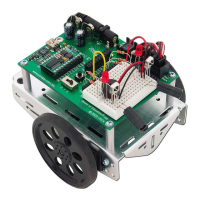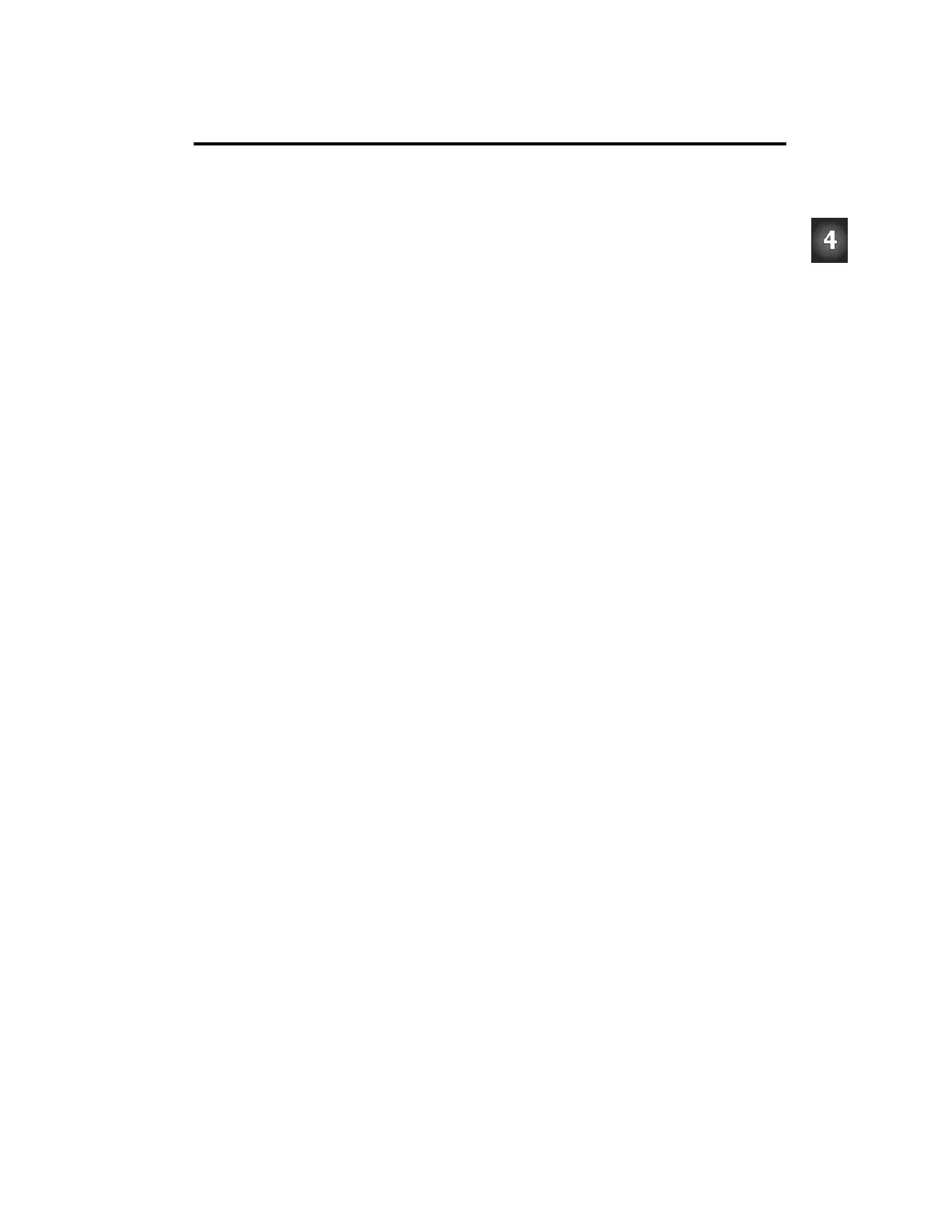Chapter 4: Boe-Bot Navigation · Page 123
Chapter 4: Boe-Bot Navigation
The Boe-Bot can be programmed to perform a variety of maneuvers. The maneuvers and
programming techniques introduced in this chapter will be reused in later chapters. The
only difference is that in this chapter, the Boe-Bot will blindly perform the maneuvers.
In later chapters, the Boe-Bot will perform similar maneuvers in response to conditions it
detects with its sensors.
This chapter also introduces ways to tune and calibrate the Boe-Bot’s navigation.
Included are techniques to straighten a Boe-Bot’s straight line, more precise turns, and
calculating distances.
Activity Summary
1 Program the Boe-Bot to perform the basic maneuvers: forward, backward,
rotate left, rotate right, and pivoting turns.
2 Tune the maneuvers from Activity 1 so that they are more precise.
3 Use math to calculate the number of pulses to deliver to make the Boe-Bot
travel a predetermined distance.
4 Instead of programming the Boe-Bot to make abrupt starts and stops, write
programs that make the Boe-Bot gradually accelerate into and decelerate out
of maneuvers.
5 Write subroutines to perform the basic maneuvers so that each subroutine
can be used over and over again in a program.
6 Record complex maneuvers in the BASIC Stamp module's unused program
memory and write programs that play back these maneuvers.
ACTIVITY #1: BASIC BOE-BOT MANEUVERS
Figure 4-1 shows your Boe-Bot’s front, back, left, and right. When the Boe-Bot goes
forward, in the picture, it would have to roll to the right edge of the page. Backward
would be toward the left edge of the page. A left turn would be make the Boe-Bot ready
to drive off the top of the page, and a right turn would have it facing the bottom of the
page.

